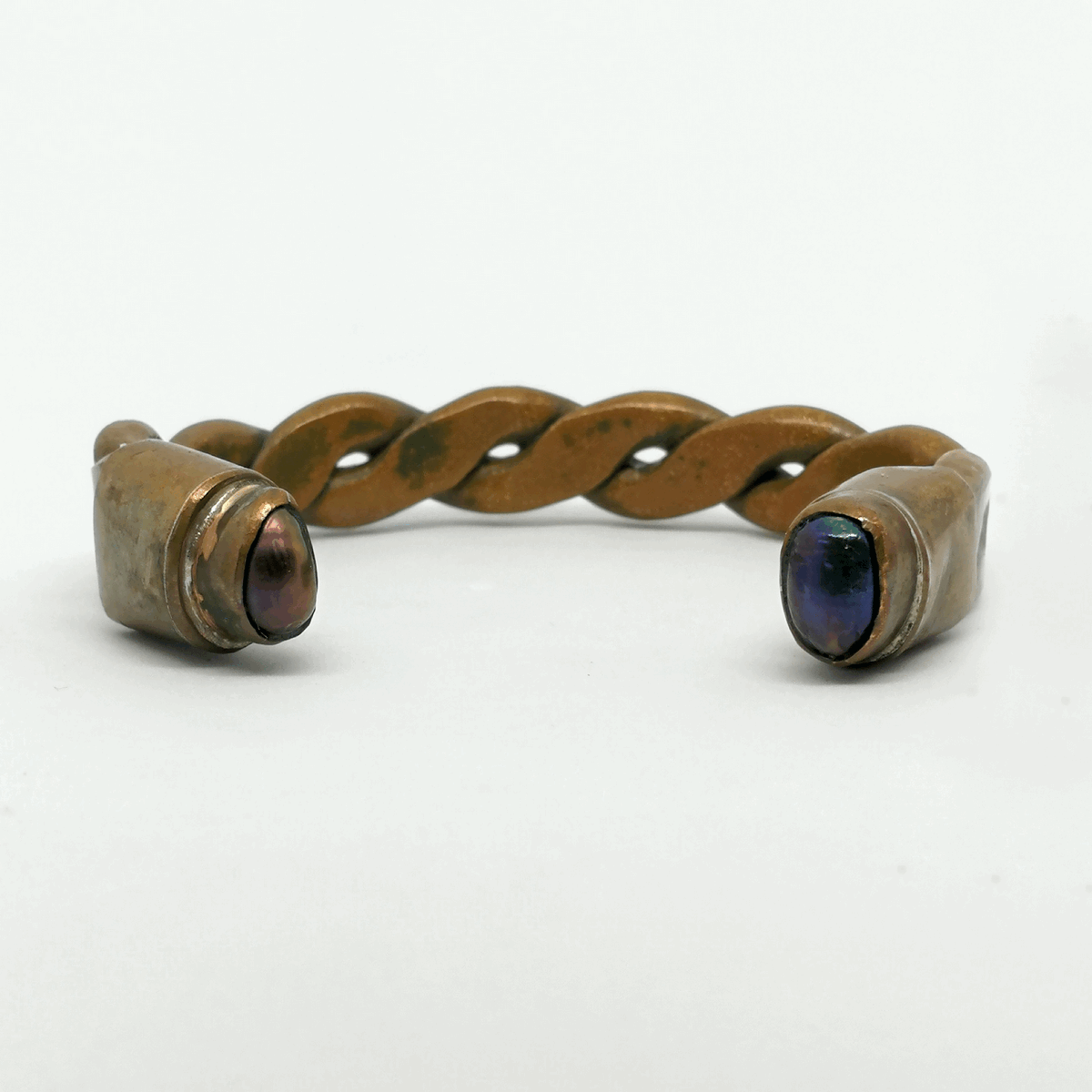
Copper
Copper was the first metal used by humans over 10 000 years ago. It is one of few metals that can be found in their elemental state in nature, and one of few metals that are not naturally grey or silver in colour.
Being a soft, malleable, and ductile metal, it lends itself to shaping, and was the first metal to be cast into shape using a mold.
Unlike gold or titanium, copper is a metal that readily reacts with a number of substances found in the Earth and atmosphere.
This means that copper is not as resistant to tarnish, oxidation, or corrosion as other metals—which goes some way as to explain its rare and sparing use in contemporary fine and high jewellery.
That said, copper’s reactivity also means that it can acquire a wide range of patinas from striking reds and tertiary brownish oranges to bright greens, blues, and even purple and pink.
While varnishes and other coatings can help to preserve the longevity of coloured copper surfaces, part of copper’s charm is that it ages alongside its wearer, and it’s difficult to predict exactly how copper’s appearance will alter throughout the years.
Copper also reacts with the human body, including our skin. When some people wear copper, a chemical reaction can occur that turns the skin temporarily green.
This does not mean that copper is being absorbed into the body, in fact copper surfaces are antimicrobial and antifungal—it is a safe metal to wear.
Malki copper jewellery is almost always treated (unless otherwise stated) with coatings that protect both the patina colour and the wearer’s skin.
We think copper is a richly coloured, earthy, and undervalued material that has an extensive and fascinating history as well as a certain life of its own.
In fact, Malki Studio artists have a unique connection to this material as our home in the Negev Desert was also home to an ancient copper mine called Timna.








